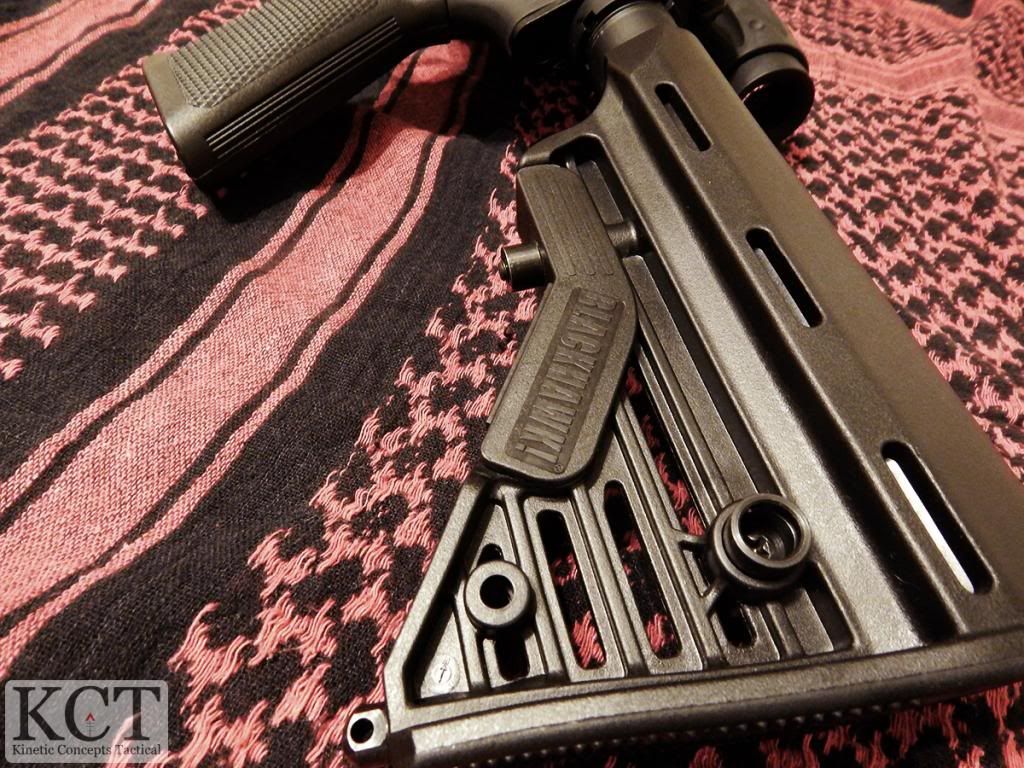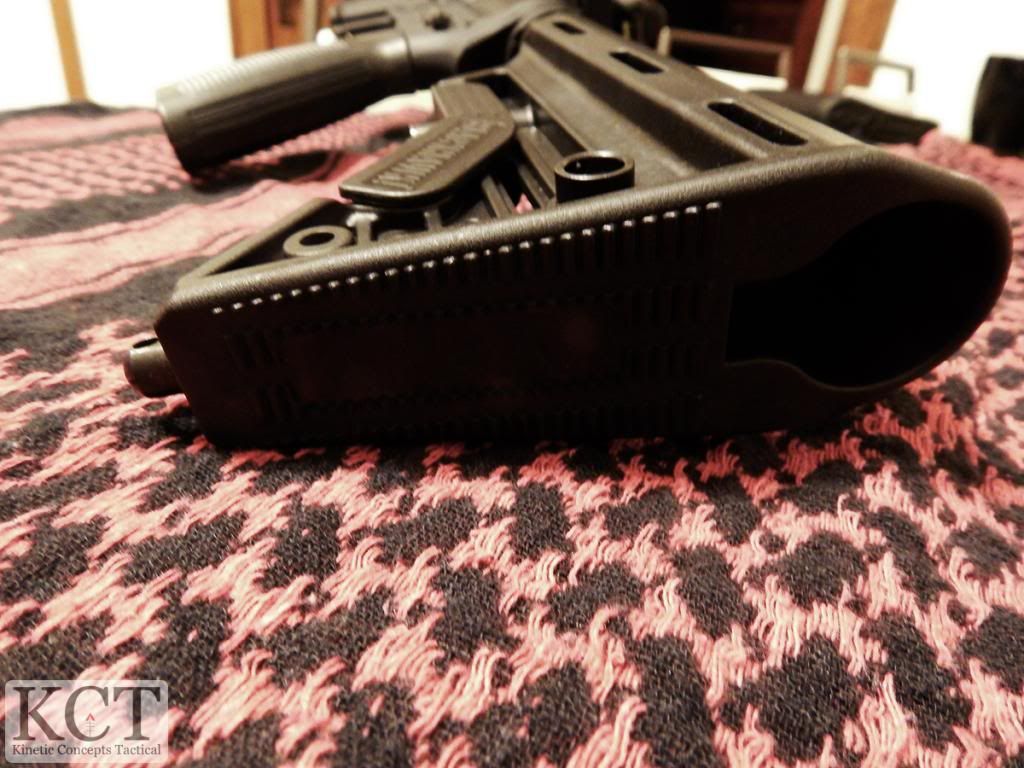The firearms industry has no shortage of parts manufacturers, and no shortage of good deals and questionable buys. When Blackhawk released their new AR-15 Stock Kit at a reasonable price, we looked for information on it, but found more questions than answers. So we ordered two of them for testing and evaluation.
The Kit
The kits arrived in good condition, and included all the parts listed.
These are:
Buffer tube: mil-spec dimensions, 6 position
Castle nut
Lock plate
Buffer
Buffer spring
QD sling swivel
Taking a look over it, the Blackhawk kit looks like it will get the job done, but lacks the finish of the upper-tier brands like VLTOR, PWS, V7, or CMT. The appeal of the Blackhawk kit is that you can get the entire kit for around the price of just the buffer tube from some of the other manufacturers.
Installation
On our first install, the threading on the tube looked a little rough, but only compared to a higher end tube. It went together easily and with no issues.
The second installation was a bit different, as this was going to be an instructor's rifle, a gun that was going to be taking a beating. The castle nut and sling plate were replaced with V7 Weapons System's lightweight parts. The installation again went without a hitch, as the components were well within tolerance with each other.
Both receivers were function checked and set aside so we could take a look at the rest of the kit.
Stock and Swivel
The included Blackhawk stock looks interesting. It resembles a standard CAR stock, with a slotted central area where the CAR is solid. It also features a QD sling swivel socket which is secured by a crossbolt and can be mounted on either side of the stock. There is also a smaller hole towards the bottom of the stock, presumably for a loop sling attachment. We tried a paracord loop, but the hole was too small. It has a small sling mount protruding from the bottom of the stock for a traditional sling mount, but lacks the standard wide CAR sling mount.
The Blackhawk stock has a textured release lever, which operates in the same manner as the CAR stock. It is less slippery than the CAR, due to the aggressive, but not obnoxious, texture.
The sides of the stock are sloped aggressively, providing a better feeling cheekweld than the tubular CAR stock. The toe of the stock has a gentle inward slope to provide a good platform for the shooter to shoulder thee rifle. The butt of the stock is textured to provide more traction when driving the gun, and while it's not the same as a rubber buttpad, it's a step in the right direction.
The QD sling swivel is very tiny when compared to a heavy-duty sling swivel, such as GG&G, Damage Industries, or V7's offerings. The swivel stayed in place on both Blackhawk stocks, and the MFT BULS stock. We tedted it on a few GD sling plates, it locked in well, and did not pop out. While it seemd to function fine and supported the weight of the complete rifles, it just felt flimsy. Maybe it was the smaller size, but I do not trust it like I trust the other options out there. It was set aside.
The stock itself has upgraded ergonomics, appearance, and a few more features, such as the QD mount, than the CAR stock has.
The Problem
All this is a moot point, because out of the box, this stock does not work. We tried both of our test stocks, and they had the same failure.
The locking bar that pulls out of the way when you engage the release lever sticks in the body of the stock. The bar pulls back into place via spring tension, just like a normal stock, but it takes 3-7 seconds to "unstick" and do its job.
When you pull your stock out to your desired length, you expect it to stay there. Some companies have made locking that position in more reliable, like Magpul's friction lock first introduced on the STR. But a stock that will not lock into place for several seconds is unforgivable. We worked the stocks over hundreds of cycles, and though they seemed to break in over time, they never had the feel they were working correctly, and would collapse when shouldered before they had time to set properly.
So for us, the stock and the swivel were pretty much garbage. We could drill out the inside of the stock to make it work right, but that's not the point. On something as serious as a firearm, and something essential as a stock, it needs to work out of the box. I'm not going to waste my time drilling out the inside of the stock to make it work when I have a gear locker full of perfectly serviceable stocks that work right the first time.
Range Time
We took the instructor rifle out on a cold, snowy Michigan afternoon, and ran several courses of fire. The rifle was ran in CQB courses ranging from 40-15 yards, and taken to the precision range and used to engage targets from 100-300 yards. Overall, the rifle saw about 250 rounds of 5.56 in this configuration (no, we didn't even attempt to run the Blackhawk stock itself, just the buffer tube assembly). It also ran about 200 rounds of .22 in testing out the CMMG conversion kit. The stock assembly had zero issues, and ran like a champ.
The Solution?
As we were shooting the pictures for this article, I was working the release lever on the stock to see what the best angle to capture the failure point was. In the middle of this, I heard something pop inside the stock and it began working much better. Not Magpul, MFT, or VLTOR better, but about as well as a standard CAR stock. So I guess if you want your Blackhawk stock to work right if it sticks when you get it, just work it over a few hundred times and it'll be good to go. If you want to spend that much time messing with it.
The Blackhawk stock kit boils down to a decent buffer tube kit, and that's about it. Being that we bought each kit for around $35, that's not too bad for what it is, but if you intend to use everything you're paying for, be prepared to put in some work to make it functional, or spend your money elsewhere.



No comments:
Post a Comment